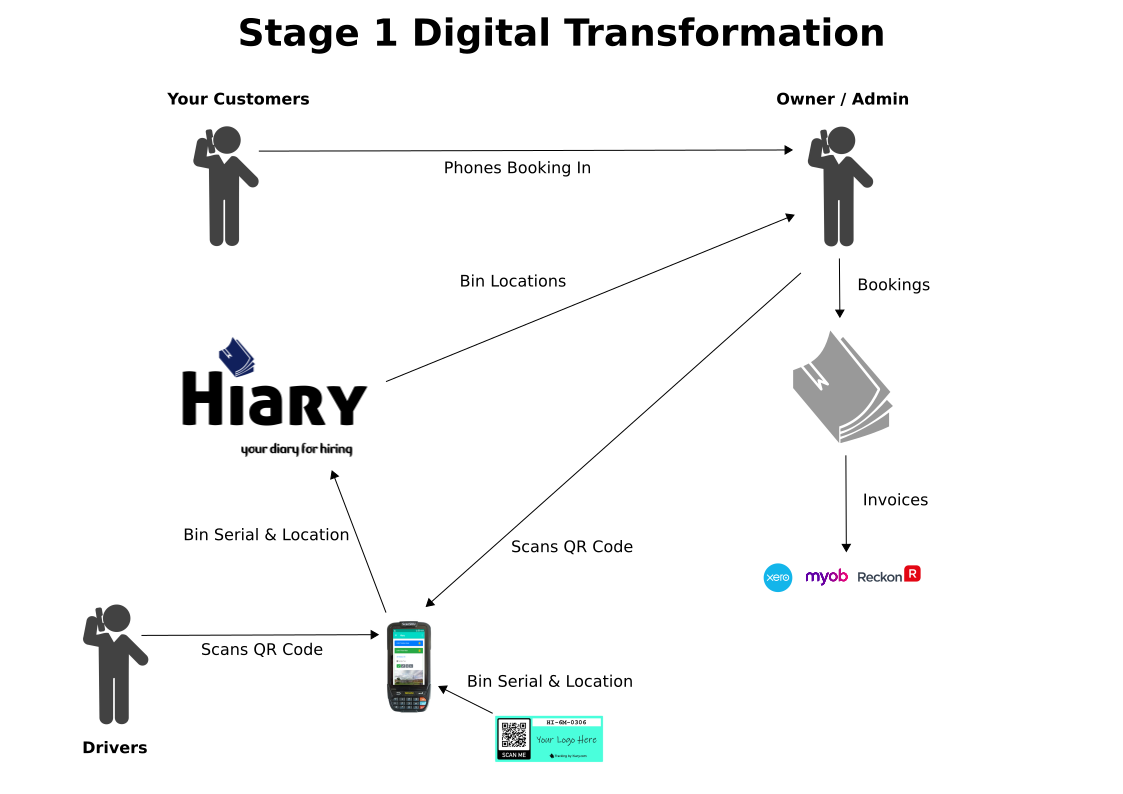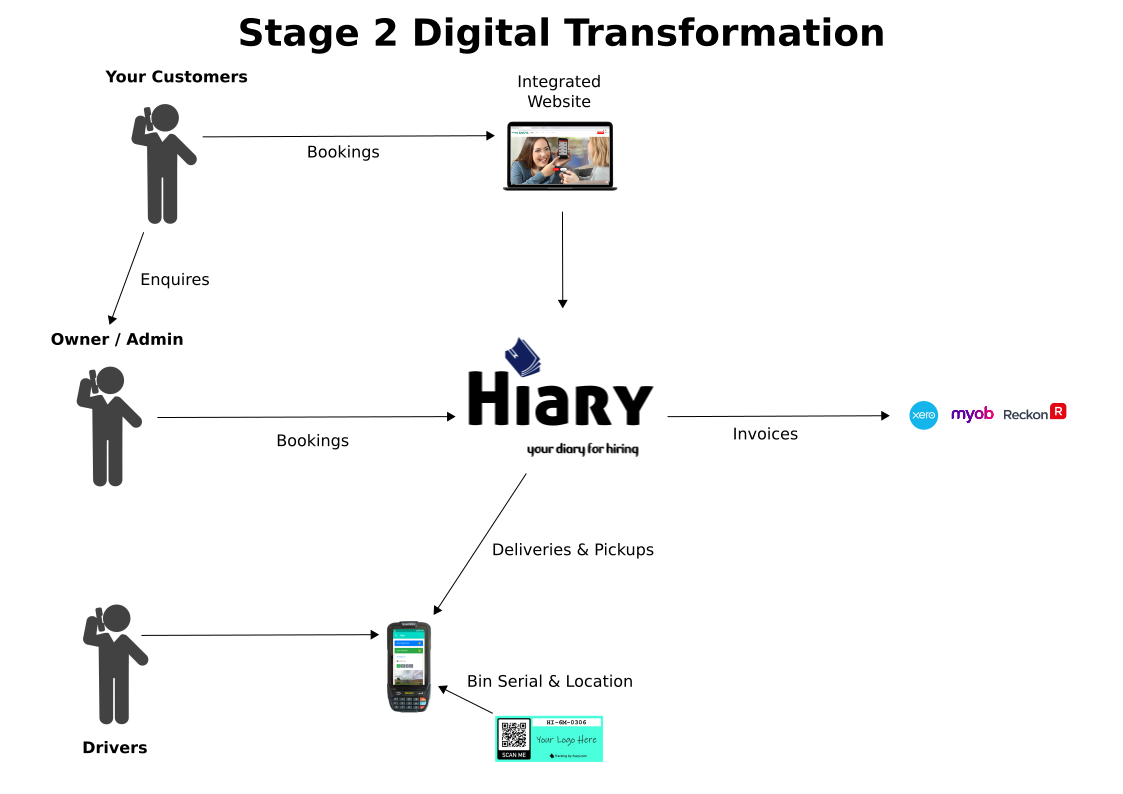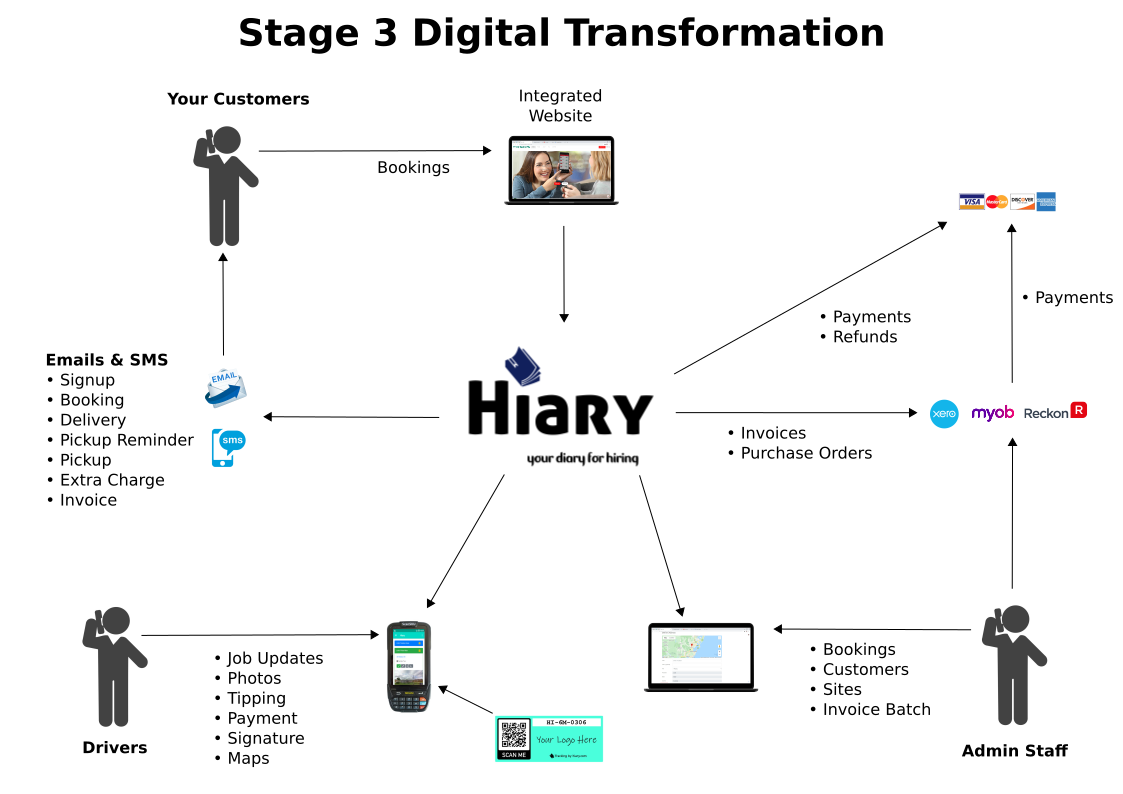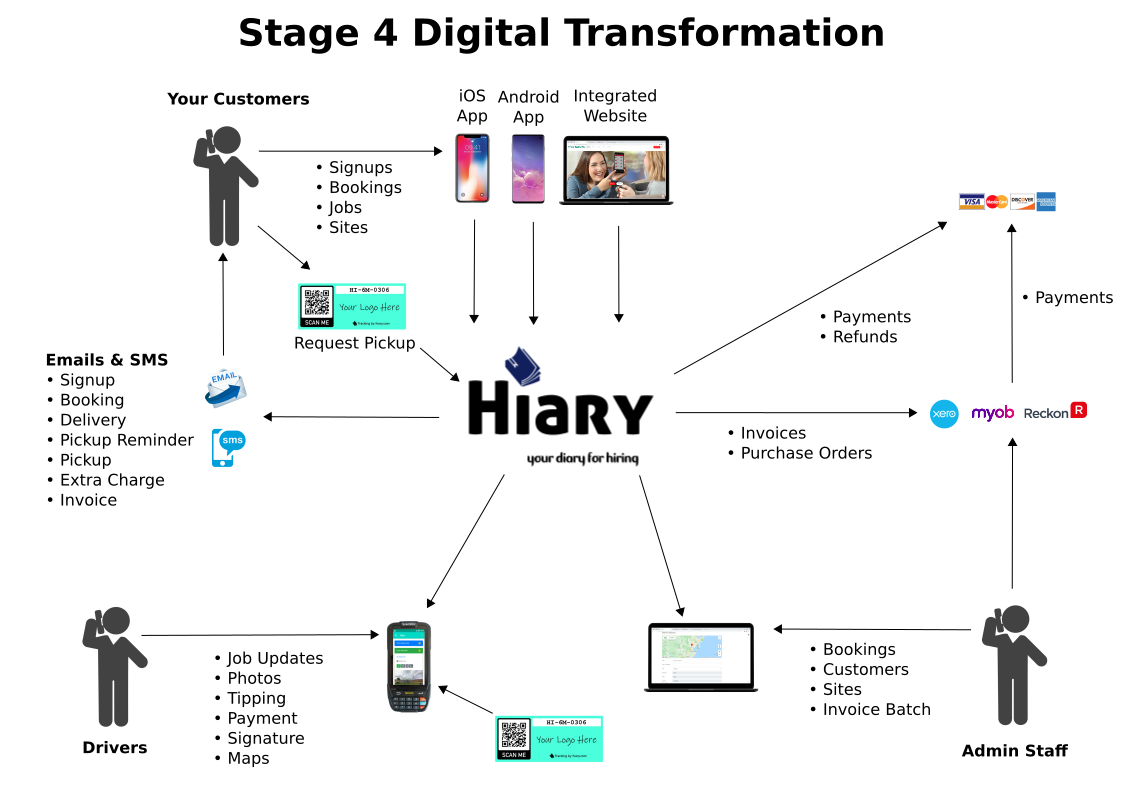The paths to digital transformation for skip and dumpster hire businesses are many and varied. Companies may prioritize different aspects of their business for transformation based on either administrative savings or customer value. Businesses who have implemented a website may have made a small step in the journey but there is much more that can be achieved with the use of skip bin management software. These websites are usually quite simple and do not integrate payment, bookings or invoice systems of record which means that while the customer interaction of booking is optimised the existing administrative system has essentially become more complicated. This additional complication is due to diversified communication channels and potentially higher customer expectations (customers who book through a website are likely to be more technically savvy).
Digital Transformation Stage 1
The lowest hanging fruit and often one of the more taxing administrative tasks is tracking the locations of skip bins and when they need to be collected. Hiary can be operated in a mode which simply captures the locations of skip bins and can then display where and when dumpsters need to be collected. This essentially keeps the internal business systems in place and allows users (including drivers) get comfortable with using an app and build up their technology skills in a meaningful way. While the diagram below does not show a website many organisations will have started their digital transformation with this step.

Digital Transformation Stage 2
When a roll off dumpster or skip bin company reaches stage 2 of their transformation they will implement a centralised system of record for operational management and do away with the diary or spreadsheets that are so often used. This is a big step for many companies but it is one that will pay many dividends.

Digital Transformation Stage 3
Stage 3 transformations are characterised by increased integration and optimisation of backend systems such that an increased volume of bookings can be undertaken without additional administration staff. A key part of this optimisation is automation of communications with customers, this may start with pickup and delivery notifications and reminders but may also include as much as invoicing and extra charges. Drivers in these scenarios are also expected to collect more data in the field such as tipping and customer signatures for proof of delivery. Photos of filled and over filled skip bins may also be collected to assist in billing disputes.

Digital Transformation Stage 4
The final stage of transformation is characterised by customers having extended service management capabilities. Customers are allowed to signup, book, view existing jobs and sites, they are also able request the collection of dumpsters using qr systems or links embedded in emails or sms messages. Additionally this stage of transformation adds mobile apps into the mix, this provides an omni channel experience that is a characteristic of a full transformation. While there are still more optimisations that could be undertaken by integrating marketing and other discovery channels this represents best of bread information systems for skip hire companies.

